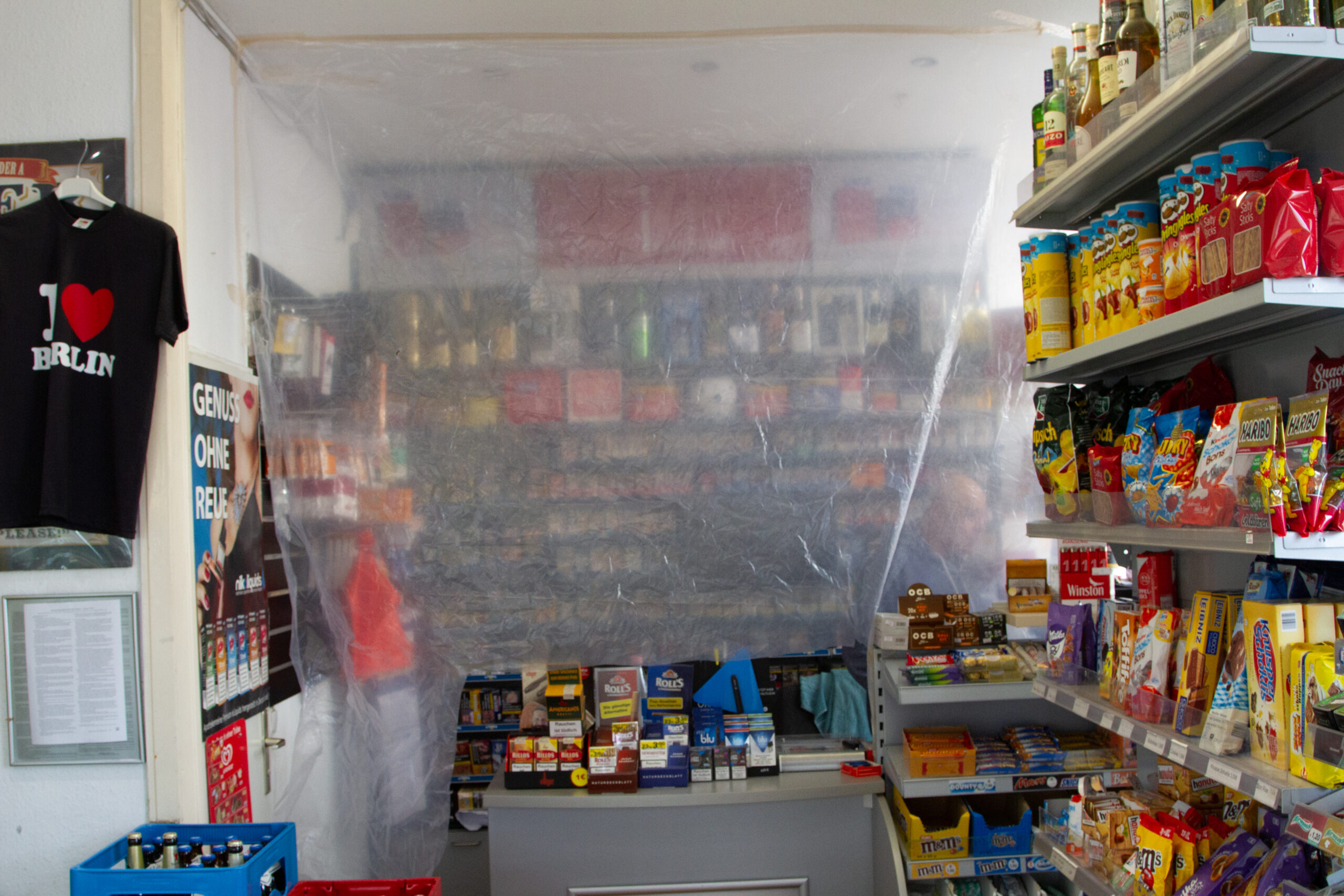Stefan Klein, Lena Skrabs, Fred Unruh
The Anatomy of DIY-Objects in an Epidemic Infrastructure
A short visual essay about the DIY infrastructures that pop up amidst a global pandemic. Part of "Learning from COVID19: Reflections on knowledge-related commons and practices of self-organization amidst COVID19."
It is just as reasonable to represent one kind of captivity by another as it is to represent something that really exists by something that does not exist.
– Daniel Defoe
In the old days you used to come across glass window panels with a small hole to reach through in old school bank buildings, post offices and train counters. With the modern idea of service these objects became a rare encounter.
Nowadays however you could see them pop up here and there in the super market, the corner store down the street or the print shop.
Almost covering the entire provision of basic supplies in society the variety of designs reaches from some more high-functioning devices in the big supermarket chains through to DIY style home-build in smaller family run stores.
In an oval shape like a riot police helmet these objects fulfil their inherent purpose in their functionality. Some made from milky acrylic glass the interaction with the person beyond the counter gets a somehow cloudy, pixilated experience. Attached to the shelf with silver lined duct tape — an all time favourite of the DIY-workmansship — or hanging on thin strings almost invisible from the ceiling this object-oriented design, with its hands-on, low-material concept, facilitates a broader key element of our ever secure environment.
In a genealogical juxtaposition the on-demand design do not have any natural voice transmission acrylic panel anymore, nor acrylic panels in aluminium frames, but rather simply a rectangular hole cut out with a Stanley knife. They are not build to hold a 16mm bullet or stop an attack with a knife. They are meant to protect from something non-tangible. A threat that is hard to grasp while opinions are updated in an instance.
The direct environment fades to design a more secure environment, the immediate surrounding has to disappear to create a secure space around everyone in everyday life.
In this on-time on-demand design object the inherent and ubiquitary belief in a secure environments in our everyday gets most visible. Describing and analysing the anatomy of a design object of this kind is casting light on the anatomy of a designed environment. This design object bypasses every professional approach and still spreads at a remarkable path through our everyday environment.
How do we encounter the world? What power is brought together by an abstraction to step in-between the fragments of our life-environment? Do we feel more comfortable in secure representation of a detached everyday in our heads or are we yearning to get in-touch with it physically? The everyday is long designed before we take any action.
Authors: Stefan Klein, Fred Unruh, with contributions by Lena Skrabs
Stefan Klein lives in Berlin and works as an artist. His many interventions, which are recorded in notebooks often remain a mere assertion. At least this is what he says.
Fred Unruh is a Berlin-based artist, who doesn’t know what art is.
Lena Skrabs is a Berlin-based artist. The celebratory possibilities of the ordinary are the focus of her practice and research.
“Learning from COVID19: Reflections on knowledge-related commons and practices of self-organization amidst COVID19” is the result of an open call for contributions launched by School of Commons in late April 2020. Shortly after COVID19 put much of the world into lockdown, the contributions form a collection of observations and different practices of learning, self-organisation, and building community amidst a global pandemic. The submitted contributions are varied in form and content, and have not been curated in any way, instead offering space to the diverse experiences and responses of all contributors.



